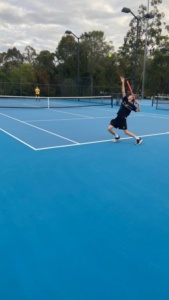Speed dominance: Mastering Mechanics for Athletic Performance:
In the world of sports, speed is often a differentiating factor that can make or break an athlete’s performance. Whether it’s sprinting down a track, darting past opponents on a soccer field, or making lightning-quick cuts on a basketball court, mastering the mechanics of acceleration, deceleration, and change of direction is of paramount importance. In this blog, we’ll delve into the significance of working on these mechanics and how they contribute to overall speed development in both individual and team sports. Let’s check each of these components to better understand them.
Acceleration: The Building Block of Speed:
Acceleration is the ability to reach high speeds in a short amount of time. Generating force against the ground, will enable athletes to accelerate faster and gain a competitive edge. The key factors are ankle stiffness, explosive leg drive, proper body positioning, piston action driven by the hips and strong core and arm action.
Deceleration: Controlled Braking for Agility:
While acceleration is essential, deceleration plays a crucial role in an athlete’s ability to change direction effectively. Deceleration allows for controlled braking, ensuring athletes can stop quickly and efficiently. This skill is particularly important in sports that require frequent changes of direction, such as soccer, basketball, and tennis. Developing strong deceleration mechanics, including proper body lean, balance, and efficient footwork, enables athletes to maintain control, reduce the risk of injury, and set themselves up for quicker reacceleration.
Change of Direction: The Agility Advantage:
Change of direction is the ability to shift one’s movement pattern rapidly and effectively. It involves a combination of deceleration, quick body rotations, and efficient footwork. Athletes with good change of direction skills, visual scanning, and perception, can outmanoeuvre opponents, create separation, and gain a strategic advantage.
Finally, it is important to know that resistance training and work ethic are the backbone of all the above skills. More strength correlates to more force being produced. By committing to regular practice, athletes can reinforce proper technique, and enhance neuromuscular coordination. Consistency breeds improvement and allows athletes to build a solid foundation of speed mechanics that can be applied under high-pressure game situations. So, make training a priority, stay disciplined, and enjoy the fruit of your consistent work.
For the Term 3 schedule and sign on links, please visit The Locker Room.
Mr Marco Mastrorocco, S&C Coordinator





